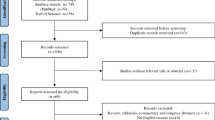Abstract
Introduction
Home care should intervene in the nutritional status of the elderly.
Objective
To analyze the nutritional status of the elderly assisted by a Home Care Program (PAD) and associate it with income and education level of the caregiver.
Casuistic and Method
Thirty-four individuals of both genders who received home care from PAD. The MNA (Mini Nutritional Assessment) was used along with arm circumference. Dietary intake assessment was done with three 24-hour recalls in non-consecutive days. We collected data on income, education level of the caregiver and user in years of formal education and autonomy of user. The differences between the proportions of the nominal variables were tested by the chi-square test. The continuous variables were tested for normality and if normal, the Student’s t-test or ANOVA was applied. The adopted significance level was P < 0.05.
Results
The studied sample represented individuals older than 65 years, assisted by PAD and 100% dependent on the caregiver. MNA revealed that 38.2% of the users were malnourished and 61.8% were at risk for malnourishment. Energy, fiber, vitamin E, calcium and zinc intakes were inadequate. Education level of the caregivers was a determining factor (P=0.01) for the nutritional status of the elderly while no association was found with respect to income.
Conclusion
These findings allows us to conclude that the nutritional status of this population is worrisome and that it may be associated with low quality of life influenced by the education level of the caregiver, but also by age, economic conditions and limited autonomy of this population.
Similar content being viewed by others
References
Instituto de Geografia e Estatística — IBGE, Censo 2000. www.ibge.gov.br.
Rosa TEC, Benício MHD, Latorre MRDO, Ramos LR. Fatores determinantes da capacidade funcional entre idosos. Rev Saúde Pública 2003; 37(1):40–48.
Karsch UM. Idosos dependentes: famílias e cuidadores. Cad Saúde Publica 2003; 19(3):861–866.
Marchini JS, Ferriolli E, Moriguti JC. Suporte nutricional no paciente idoso: definição, diagnóstico, avaliação e intervenção. Medicina 1998; 31: 54–61.
Silvestre JA, Kalache A, Ramos LR, Veras RP. O envelhecimento populacional brasileiro e o setor saúde. Sociedade Brasileira de Geriatria e Gerontologia. Editora Científica Nacional Ltda.1996.
Vellas B, Guigoz Y, Garry PJ, Nourhashemi F, Bennahum D, Lauque S, Albarede JL. The mini nutritional assessment (MNA) and its use in grading the nutritional state of elderly patients. Nutrition 1999; 15(2):116–122.
Acuña K, Cruz T. Avaliação do Estado Nutricional de Adultos e Idosos e Situação Nutricional da População Brasileira. Arq Bras Endocrinol Metab 2004; 48(3):345–361.
Rodrígues AK, Linares MCG, Fernández MCG, Arias MTG, Evaluación dietética y parámetros bioquímicos de minerales en un colectivo de ancianos de la provincia de León (España). Instituto de Ciencia y tecnología de los Alimentos (ICTAL). Universidad de León. Espanha, 2002.
Anção NS, Cuppari L, Tudisco ES, Draibe SA, Sigulen D. Sistema de apoio a decisã em Nutrição — versão 2,5-Centro de informática em saúde — CIS — Universidade Federal de São Paulo (UNIFESP/EPM) 1995.
Philippi ST, Szarfarc SC, Latterza AR. Virtual nutri (software), versão 1.0 for windows. Departamento de nutrição/Faculdade de Saúde Pública/USP. São Paulo, 1996.
Dietary Reference Intake for energy (DRI), carbohydrates, fiber, fat, protein and amino acids (Macronutrients). Institute of Medicine (IOM) [online] 2002 [cited 5-10-2002]. Disponível em: http://www.nap.edu/openbook/0309085373/html/1.html
Papaléo NM, Tieppo A. Serviço de assistência domiciliária da clínica geronto geriátrica do Hospital do Servidor Público Municipal de São Paulo. In: Duarte YA de O, Diogo MJD. Atendimento Domiciliar: um enfoque gerontológico. São Paulo (SP): Atheneu; 2000. p.549–564.
Silvestre JA, Costa NMM. Abordagem do idoso em programas de saúde da família. Cad Saúde Pública 2003; 19: 839–847.
Nogués R. Factors que afectan la ingesta de nutrientes en el anciano y que condicionan su correcta nutrición. Nutrición Clínica 1995; 15(2):39–44.
Tavares EL, Anjos LA dos. Anthropometric profile of the elderly Brazilian population: results of the National Health and Nutrition Survey, 1989. Cad. Saúde Pública. 1999; 15(4):759–768.
Campos MTFS, Monteiro JBR, Ornelas APRC. Fatores que afetam o consumo alimentar e a nutrição do idoso. Rev. Nutr. 2000; 13(3):157–165.
Fabrício SCC, Wehbe G, Nassur FB, Andrade JI. Assistência domiciliar: A experiência de um hospital privado do interior paulista. Rev Latino-americana de Enfermagem 2004; 12(5):721–726.
Smith KL, Soriano TA, Boal J. Brief communication: National quality-of-care standards in home-based primary care. Ann Intern Med. 2007; 146(3):188–192.
Saliba D, Solomon D, Rubenstein L, Young R, Schnelle J, Roth C, Wenger N. Feasibility of quality indicators for the management of geriatric syndromes in nursing home residents. J Am Med Dir Assoc. 2004;5(5):310–319.
Vallerand AH, Collins-Bohler D, Templin T, Hasenau SM. Knowledge of and barriers to pain management in caregivers of cancer patients receiving homecare. Cancer Nurs. 2007;30(1):31–37
Joosten E, Vanderelst B, Pelemans W. The effect of different diagnostic criteria on the prevalence of malnutrition in a hospitalized geriatric population. Aging. 1999;11(6)390–394.
Collins S. Using middle upper arm circunference to assess severe adult malnutrition during famine. J. Am. Med Assoc. 1996; 276:391–395.
Author information
Authors and Affiliations
Corresponding author
Rights and permissions
About this article
Cite this article
Correa, B., Leandro-Merhi, V.A., Pagotto Fogaca, K. et al. Caregiver’s education level, not income, as determining factor of dietary intake and nutritional status of individuals cared for at home. J Nutr Health Aging 13, 609–614 (2009). https://doi.org/10.1007/s12603-009-0171-1
Received:
Accepted:
Published:
Issue Date:
DOI: https://doi.org/10.1007/s12603-009-0171-1




